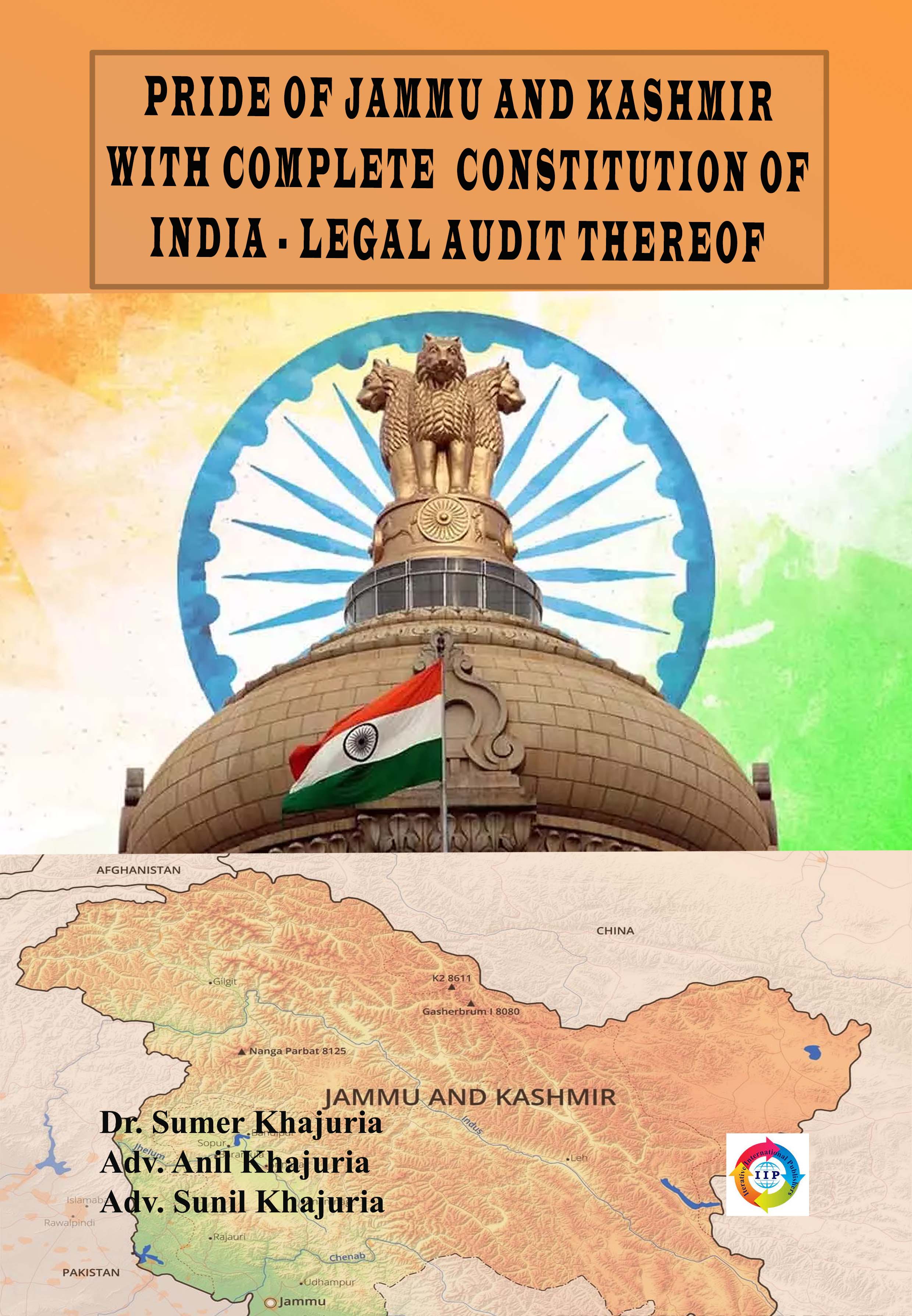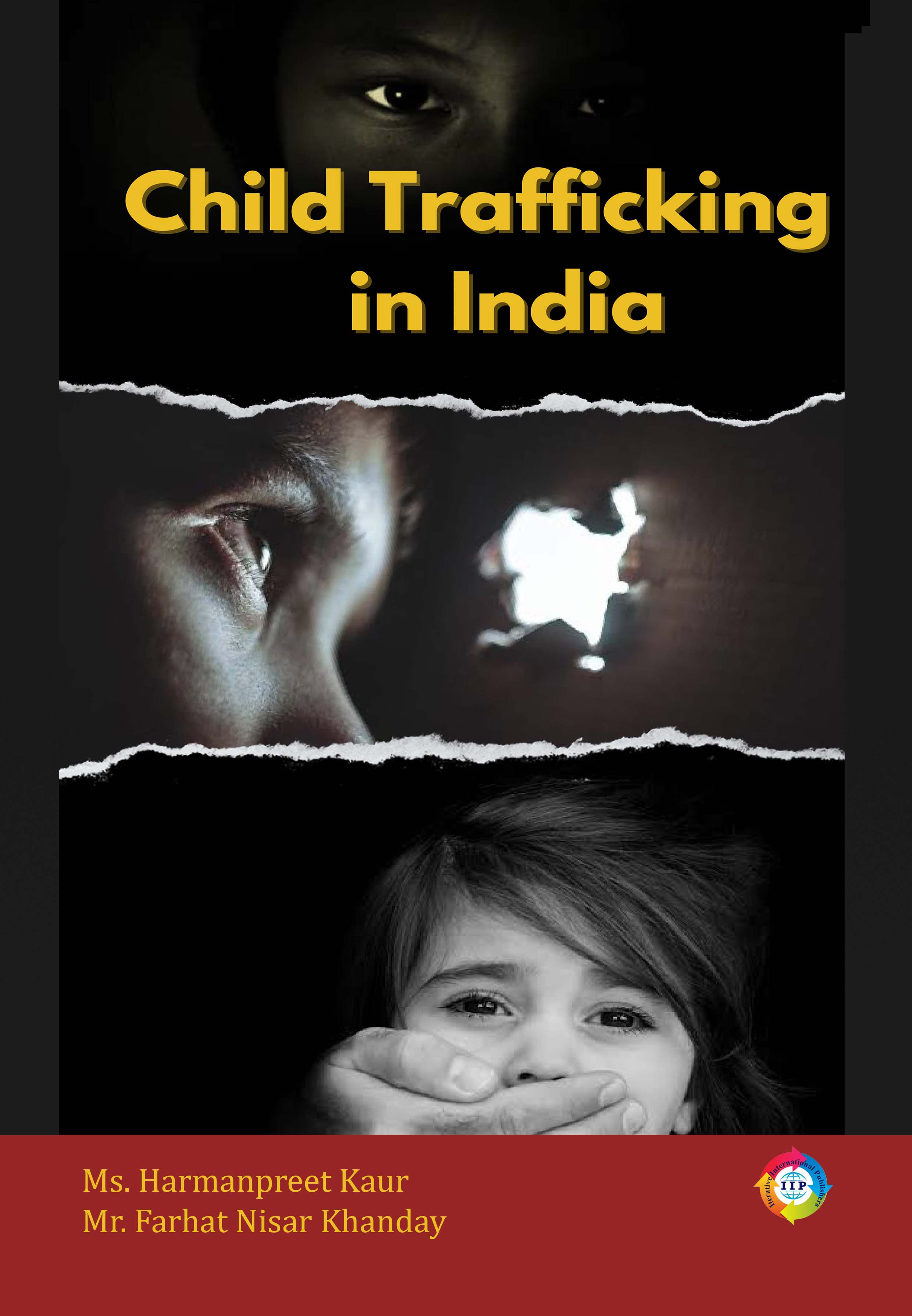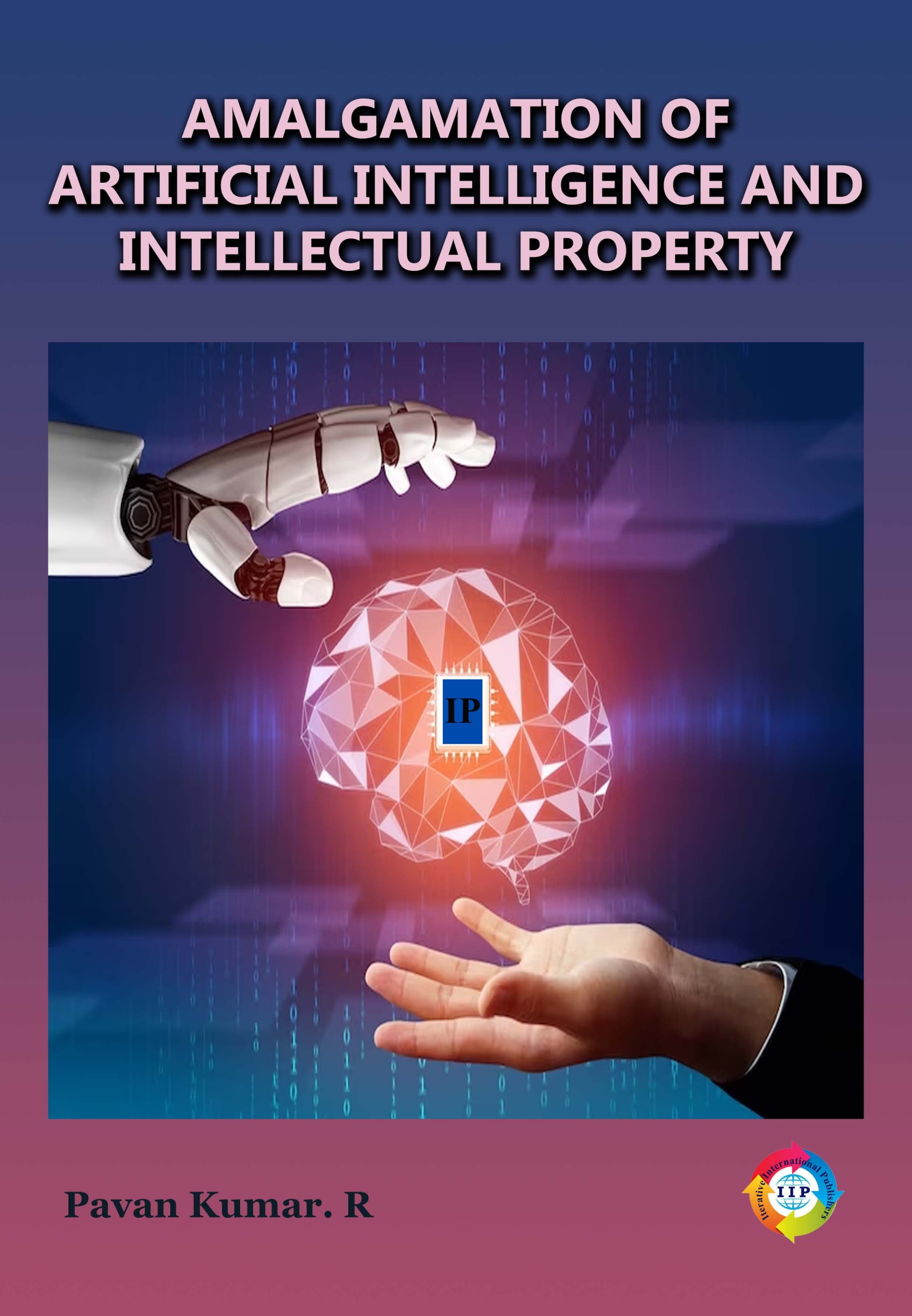
PRIDE OF JAMMU AND KASHMIR WITH COMPLETE CONSTITUTION OF INDIA- LEGAL AUDIT THEREOF
-
TypePrint
- CategoryAcademic
- Sub CategoryLaw
- StreamSocial Sciences
The New Oxford American dictionary defines A Constitution, as broadly an aggregate of fundamental principles or established precedents that constitutes its legal basis of a polity, organization or other type of entity and commonly determines how that entity is governed. The term Constitution comes through French from the Latin word Constitution, used for regulation and orders such as the imperial enactments (Constitutions principals edicta, mandata, decreta, rescripta) as has been derived from the Historical and Institutional context of Roman Law. Later the term was widely used in canon law for an important determination, especially a decree issued by the Pope now referred to as an apostolic Constitution.
Oxford Handbook of Comparative Constitutional law by Oxford University Press, lays down that the term as used by Black stove was not for legal text nor did he intend to include the later American concept of Judicial review “for that were to set the judicial power above that of the legislature which would be subversive of all government.
Generally, every modern written Constitution confers specific powers on an organization or institutional entity, established upon the primary condition that it abides by the Constitution’s limitations. According to Scott Gordon, (His controlling the state Constitutionalism from Ancient Athens to today) a political organization is constitutional to the extent that it contains institutionalized mechanisms of power control for the protection of interests and liberties of the citizenry including those that may be in minority.
When these principles are written down into a single document or set of legal documents, those documents may be said to embody a written Constitution, if they are encompassed in a single comprehensive document. It is said to embody a codified Constitution. The Constitution of the United Kingdom is a notable example of a UN codified Constitution, it is instead written in numerous fundamental Acts of a Legislature, Court cases or treaties.
The Constitution of India is the longest written Constitution of any country in the world with 1, 46, 385 words in its English language version.
According to the Supreme Court of India as defined in case of B.R. Kapur V State of Tamil Nadu (AIR 2001 SC 3455) ”The Constitution is a document having a special legal sanctity which sets out the framework and principal functions of the organs of the Government within the State and declares the principles by which those organs must operate. The Constitution refers to the whole system of governance of a country and the collection of rules which establish and regulate or govern the Government………….
Where the country has written a constitution which ranks as fundamental law, legislative or executive acts which conflict with the Constitution must be held to be unconstitutional and this illegal. The people of the Country, the organs of the Government, legislature, executive and judiciary are all bound by the Constitution to be supreme lex or the paramount law of the land and nobody is above or beyond the Constitution”
In the case of the State of WB V Committee for Protection of Democratic Rights, AIR 2010 SC 1476, The Supreme Court held that “the Constitution of India being written Constitution is the fundamental law of the land. This has several significant implications. It is under this fundamental law that all laws are made and executed, all governmental authorities act and validity of their functions adjudged. No legislature can make a law and no government agency can stand if it is contrary to the Constitution. The Constitution thus Conditions the governmental process in the country. In 2012, the Pakistan’s Supreme Court held that an unconstitutional legislation become non-est. along with all actions pursuant there (2012) 2 SCC (FJ) 9.
According to Dr Ambedkar “A federation being a dual policy based on divided authority with separate legislative, executive and judicial powers for each of the two politics, it is bound to produce diversity of laws, in administration and judicial protection. Up to a certain point his diversity does not matter. It may be welcomed as being an attempt to accommodate powers of government to local needs and circumstances. But this diversity when it goes beyond a certain point is capable of producing chaos and has produced chaos in many federal states. It was further added that federalism did not differ from the faults of rigidity or legalism. The Indian federal polity was not a classical federation of American would as is demonstrated by the many features which may be called un- federal. There is no separate judicial system to administer the state and federal laws separately. The judiciary is an integrated judiciary dealing with the prominent unitary feature of Indian Federal set up. The Supreme Court said that the interference is inevitable and that the distribution of powers – both legislative and executive does not support the theory of full sovereignty to the states” as held in the state of W.B. V Union of India AIR 1963 SC 12741. In a sense the Indian Union is federal. But as regards the extend of federalism, the Supreme Court in case of State of Rajasthan V UOI AIR 1977 SC 1361 had held that is it largely watered down by the needs of progress and development of the country which has be nationally integrated, politically and economically co-ordinate and socially, intellectually and spiritually uplifted.
Our Constitution endows the judiciary with the power of declaring a law as unconstitutional if it is beyond the competence of the legislature according to the distribution of powers provided by the Constitution or if it is contravention of the fundamental rights guaranteed by the Constitution or any other mandatory provision of the Constitution. As the Apex Court in state of Madras V ROW AIR 1952 SC 196 has pointed out, the Constitution of India has expressly provided for judicial review in Article 13, according to which the duty to determine the Constitutionality of a statute when it is challenged on the ground of contravention of fundamental rights.
The Constituent Assembly of India which assembled for the first time on 13th December 1946 had introduced and adopted on 22nd January 1947 the historical objective resolution so introduced by Pandit Jawahar Lal Nehru read as;
- “This Constituent Assembly declares its firm and solemn resolve to proclaim India as an Independent sovereign Republic and to draw up for her future governance a constitution;
- Wherein the territories that now comprise British India, the territories that now form the Indian states as well as such other territories as are willing to be constituted into the Independent Sovereign India, shall be a union of them; and
- Where is the territories, whether with their present boundaries or with such others as may be determined by the Constituent Assembly and thereafter according to the Law of the Constitution, shall possess and exercise all powers and retain the status of autonomous units, together with residuary powers and functions of Government and administration, save and except such powers and functions as are vested in or assigned to the Union, or as are inherent or implied in the Union or resulting there from; and
- Wherein all power and authority of the sovereign Independent India its Constituent parts and organs of Government are derived from the people ; and
- Wherein shall be guaranteed and secure to all the people of India, justice, social economic and political; equality of status of opportunity and before the law, freedom of thought, expression, belief , faith , worship, vocation, association and action, subject to law and public morality, and
- Wherein adequate safeguards shall be provided for minorities, backward and tribal areas and depressed and other backward classes; and
- Wherein shall be maintained the integrity of the territory of the Republic and its sovereign rights on land, sea and air according to justice and the law of civilized nations; and This ancient land attains its rightful and honored place in the world and makes
Its full and willing contribution to the promotion of world peace and the welfare of mankind” According to the scheme recommended by the Cabinet Delegation, as to the Composition of the said Constituent Assembly it had to be elected by indirect election by the members of the Provincial Legislative Assemblies. Further essentials of this scheme were;
- Each province and each Indian state or group of states were allotted a total number of seats proportional to their respective populations roughly in the ratio of one to a million. As a result provinces were to elect 292 members while the Indian states were allotted a maximum of 93 seats.
- The seats in each province were distributed among the three main communities, Muslim, Sikh and General in proportion to their respective population.
As a result of the partition under the Plan of June 3, 1947, the representatives representing to areas of Bengal, Punjab, Sindh, NEWFP, Baluchistan and the Sylhet District of Assam, ceased to be members of the Constituent Assembly of India and there was fresh election in the new Provinces of West Bengal and East Punjab. As a result when the Constituent Assembly re-assembled on the 31st October 1947, the members actually present on 26th November 1949 had appended their signature to the Constitution finally passed.
It may be stated that the state of Jammu and Kashmir after having been acceded to India on 26th October 1947, while holding the population as a whole of the state spread over 2,22,236 sq kilometers areas which held a population of 40 lakh, was accordingly allocated 4 seats for
representation of the state in the Indian Constituent Assembly. Ironically the Jammu and Kashmir State which had its democratic institution constitutionally called as Praja Sabha, still alive for three years more was sidelined and four members were nominated on the recommendations of Sheikh Mohammad Abdullah in June 1949 (at a belated stage) being Sheikh Mohammad Abdullah despite being Prime Minister of the State himself, Mirza Afzal beg despite being members of the State Cabinet, Mouland Mohammad Masoodi all three from Kashmir Province and only one Moti Ram Baigra from Jammu region. Although the proportion of population of Jammu province according to the 1941 census was 17,28,705 in Kashmir region, 3, 11,478 in Ladakh and rest 9,81,533 including POJK, Mirpur & Kotli District in Jammu region.
In Fact the right of POJK people including a portion of Ladakh was usurped by Kashmir Centric leader Sheikh Abdullah. Since all these four members of the Constituent Assembly had appended their signatures to the finally adopted Constitution of India on 26th November 1949, therefore nothing is left to agitate to the veracities of the Constitution of India which applied to the State of J&K on 5th August 2019 in toto by superseding the provisions of Controversial Constitution (Application to Jammu and Kashmir) Order 1954, dated 14th May 1954. In essence the fate of said Constitutional order was temporary and transitory in nature and was bound to face an end as assured on the floor of the Constituent Assembly of India as well as on the floor of the Parliament of India.
In my accumulations, my endeavour has remained to bring on surface all facts and circumstances before the public domain to adjudge the truth of the intent and contents cropped up by some people with misrepresentations of the facts intending to dilute the justice done with the people of Jammu and Kashmir in particular and of India in general by application of the entire Constitution of India in this state of Jammu and Kashmir since 5th August 2019, by showing the doors to the seven decades persisting hegemony of Kashmir centric few families and by giving sigh of relief to a common man of the state.
Infact some disruptive forces all along these seven decades had remained active to derail, the true constitutional system of the state and inviting the contingencies of uncertainties and terrorism resulting heavy human causalities and loss of private and Government properties. But where as the mastermind behind such disruptions virtually enjoyed lavishly on all counts.
Jammu and Kashmir being a dynamic destinations hub for tourism need to promoted further for her lost glory of heaven on this earth by denouncing not only terrorism but its promoters as well. Even the foreign countries like Islamic Republic of Afghanistan, Bhutan, Russia, Shri Lanka like other countries as well have appreciated the bold step of the Indian Government, a step bound to curb the menace of terrorism of sorts and uncertainty.
**Note: IIP Store is the best place to buy books published by Iterative International Publishers. Price at IIP Store is always less than Amazon, Amazon Kindle, and Flipkart.





COMMENTS
No Review found for book with Book title. PRIDE OF JAMMU AND KASHMIR WITH COMPLETE CONSTITUTION OF INDIA- LEGAL AUDIT THEREOF